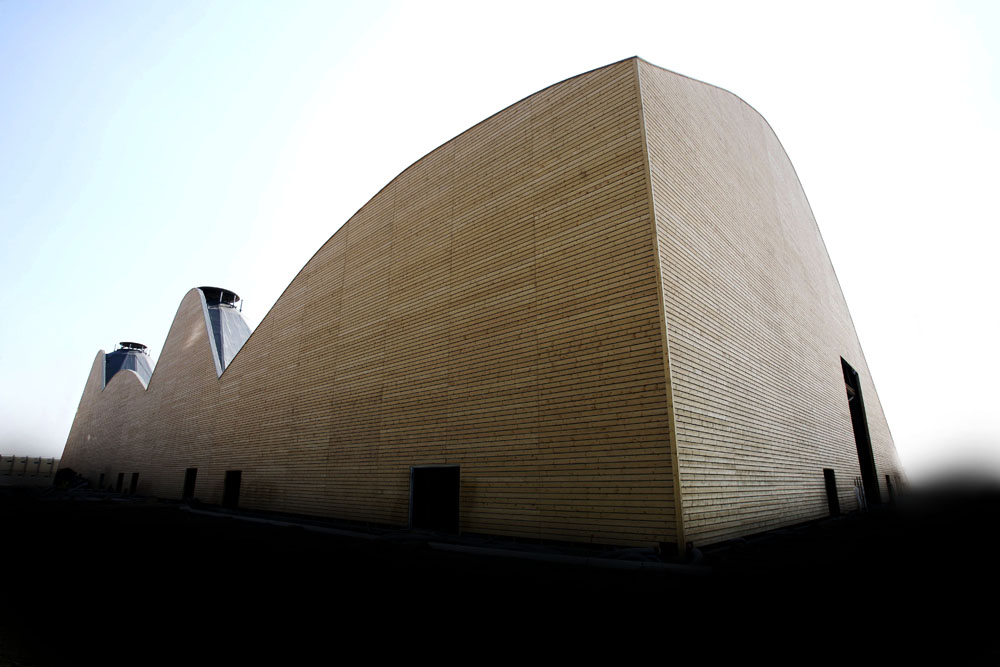Expo 2015 Special
Davide Rampello. How I created the entrance to Expo 2015, the Pavilion Zero
1,010,000 square metres, 53 the pavilions of the participating countries (exceeding the 42 in Shanghai). Expo Milano 2015 focuses the world’s attention on Milan and Italy for six months, from May 1 to the end of October. The theme Feeding the Planet, Energy for Life is the thread that runs through all the exhibits in the pavilions, the events organised inside and outside the exhibition site and in several Italian cities that have joined the event with on-site events. Completely new are the Clusters: nine villages shared by several nations, six dedicated to food chains and three to specific issues related to food. Covered, like all the other pavilions, by a striking roof of white sails.
Above all Pavilion Zero, the first space that visitors see, the gateway that has the difficult task of explaining the main theme of this World Exposition. A difficulty that has been cleverly overcome by curator Davide Rampello, who designed a kind of theatre of wonders, an emotive machine that conveys knowledge without being weighed down by didactic teachings. A long journey divided into stages designed by Michele De Lucchi. 12 scenic spaces spread over 9,000 square metres, each dedicated to a theme, to a step in the evolution of the relationship between man, the environment, technology and food.
What was your first feeling when you were was asked to design the contents of Pavilion Zero?
I thought about how it would be the front door of this Expo, and I immediately thought of the history of man, because the history of food coincides with that of homo sapiens. It was a brilliant intuition and from there I started to imagine.
What were your first tools?
I had before me, as always at the beginning of each new job, only blank sheets of paper, a pencil and a dictionary. All the strands of everything are interwoven in the dictionary. The word is the cornerstone of a speech, of an image. Understanding how man used the word in the course of his history means possessing the keys to access the basis of each project.
Why did you choose a wide and high cut to explain the theme of the Expo?
Because the Expo is Universal. It is addressed to the unit, and the unit is man, simply the history of man.
Which elements from the history of Italian art and architecture were sources of inspiration for you?
The pavilion does not speak of Italy but of the world, even if I was influenced my sensitivity, which is Italian. However, more than the works of art, books were my fundamental reference.
They are the written testimony and I tried to read them in their original language as much as I could. So, my sources. In short, my sources of inspiration were precisely the sources, the springs. It is no coincidence that springs are the element from which water flows, which is essential for human survival. Classical sources such as the Roman and Greek treaties that are the basis of our culture.
In your work, are there elements linked to Florence?
For Humanism, Florence was the cradle of the reinterpretation of the reinterpretation of Greek and Latin culture. It is the moment when, for the first time, man comes to terms with memory and reinterprets it. Hence the rebirth, the Renaissance.
In light of the reflections and research done for this impressive work, what will help man rediscover the lost balance in his relationship between food and the consumption of land resources?
Only a new-found balanced relationship with himself.
From the architectural point of view, what is the real peculiarity of Expo 2015?
The Expo covers a relatively small area, compared to previous exhibitions. Its structure is a tribute to the Roman tradition. It is designed just like a Roman castrum, with two large arteries that cross each other, the Cardo and the Decumanus. On these axes, the pavilions of the participating countries face each other. Besides this, it is important to mention that since the last Expo in 2010 construction techniques have evolved further and greater sustainability is right at the basis of the works for Expo 2015.
What aspect of the Italian universe should be communicated the most during the Expo?
The density of Italian history, I think. We should not disregard our memory. If we become a country without memory, we become a country of ruins. Picturesque, but devastated.
Do you believe that Expo 2015 will really be, as many say, the starting point for a mini tour of Italy for many foreign visitors?
As long as that the local areas find the energy to reinterpret themselves.









